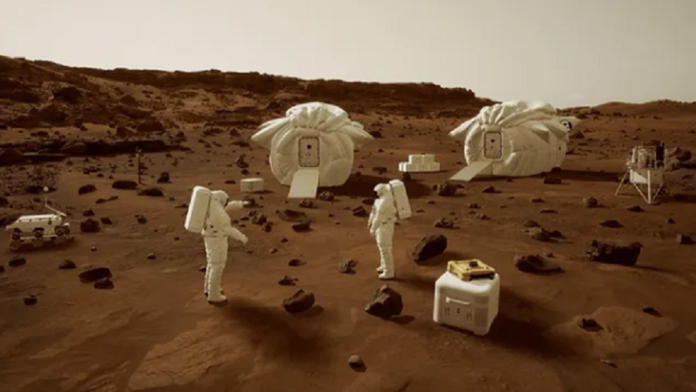A virtual reality challenge seeks to help prepare astronauts for Red Planet living.
NASA opened a new Mars challenge today (Feb. 16) in partnership with crowdsourcing platform HeroX, along with Fortnite maker Epic Games and simulation company Buenda. They need your help to create a virtual reality environment to “replicate the experiences and situations astronauts may encounter on Mars,” the entities stated in a press release.
Mars is a challenging environment compared to Earth, which is why NASA is looking for software to simulate various aspects of a Red Planet mission. Martian gravity is just 40% as strong as Earth’s, for example, and weather conditions are dusty and windy. Even the daylight is strange, with “the orange hues of day transitioning to blue at night,” the release added.
Around $70,000 of prize money is available to share between up to 15 participants who pass two phases: the first to build a storyboard concept and the next to create a virtual reality environment showing how Mars living may work.
Related: Mars’ atmosphere: Facts about composition and climate
The challenge, dubbed MarsXR 2, is a sequel experience to another challenge that was completed in 2022 (opens in new tab). The previous challenge focused on extravehicular activities, or excursions by spacesuited astronauts on the Martian surface. Full eligibility details for the new challenge are available on the HeroX website (opens in new tab).
“We are launching this sequel challenge to engage a greater number of thinkers and creators,” Kal Sahota, CEO of HeroX, said in the statement. “We had a lot of success with the first challenge, and with this storyboard option, we expect even more innovative ideas and a broader audience of participants.”
HeroX and NASA have run numerous space challenges over the years, including a 2022 data-analysis effort seeking evidence of life on Mars.
NASA has no immediate plans to put people on the Red Planet; the agency’s deep-space crewed efforts are currently working to land people on the moon with the Artemis program as soon as 2025. NASA views the moon as a stepping stone to Mars, however; the agency is tentatively targeting a crewed Mars landing in the late 2030s or early 2040s, depending on funding and technology developments.
Elizabeth Howell is the co-author of “Why Am I Taller (opens in new tab)?” (ECW Press, 2022; with Canadian astronaut Dave Williams), a book about space medicine. Follow her on Twitter @howellspace (opens in new tab). Follow us on Twitter @Spacedotcom (opens in new tab) or Facebook (opens in new tab).

